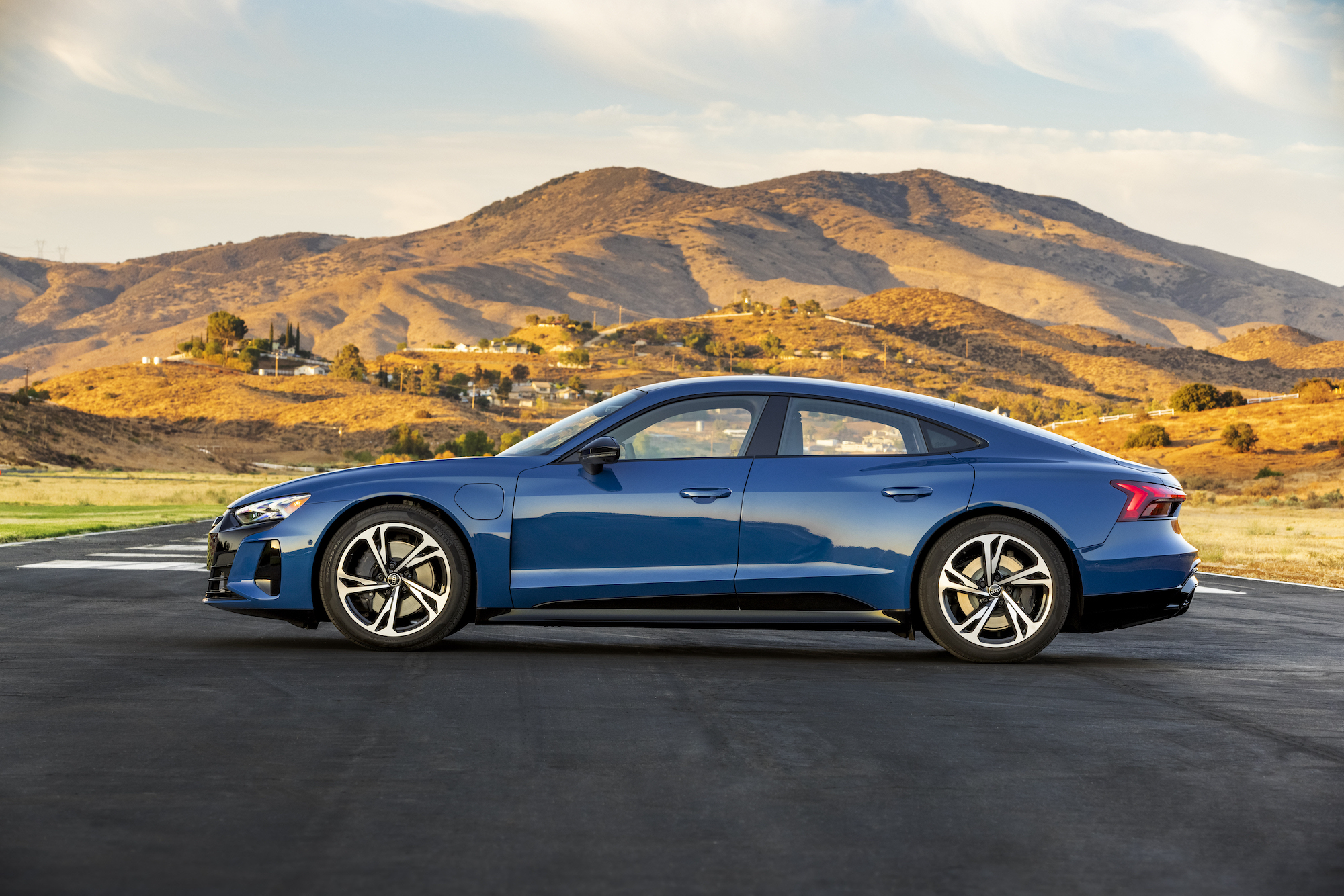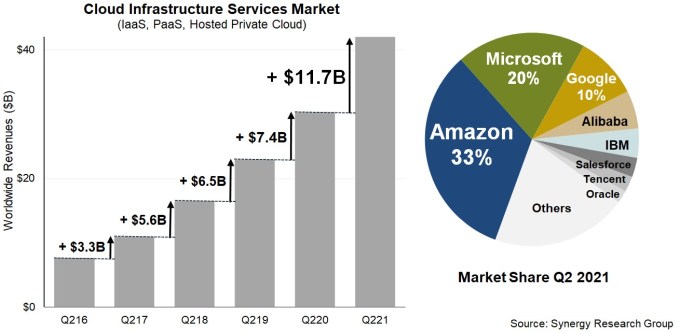- August 2, 2021
- by:
- in: Blog
Luxury, technology and a whole lot of flash often go hand in hand. In the age of space-faring billionaires, we all expect the latest wiz-bang gadget to look like something from the future, right? Not in Audi’s view. The 2022 Audi e-tron GT and RS e-tron GT are a pair of all-electric grand touring halo
Luxury, technology and a whole lot of flash often go hand in hand. In the age of space-faring billionaires, we all expect the latest wiz-bang gadget to look like something from the future, right?
Not in Audi’s view. The 2022 Audi e-tron GT and RS e-tron GT are a pair of all-electric grand touring halo cars that don’t look like something from 2060. They look just like sleek gasoline-powered GTs, but beneath the skin, there’s a whole lot more power, technological pop and panache than the design implies at first glance.
The 2022 Audi e-tron GT and RS e-tron GT get a low-slung roofline, wide track and long wheelbase like those grand tourers of the past, with the addition of a few design flourishes to bring it in line with Audi’s subtle, yet luxurious aesthetic. While the e-tron GT and the RS e-tron GT were both produced alongside the Audi R8 (its roofline is lower than the R8) and borrow a few things from that iconic design, these electric grand tourers are a pair of beasts all their own.
Nuts and bolts
Based on the same 800-volt architecture as the Porsche Taycan, the e-tron GT makes 469 combined horsepower (up to 522 hp with overboost) from a pair of dual, permanent-magnet motors powering the front and rear wheels. The RS e-tron GT makes 590 (637 hp with overboost) horsepower from those same motors and Audi says it can do 0-60 in 3.1 seconds.
Both vehicles are capable, confident and quick and don’t tarry on mountain roads or long highway stretches. Acceleration is almost seamless, as it is in most electric vehicles.
Thanks to Audi’s electric quattro all-wheel drive with torque vectoring system, both vehicles are sure-footed and well sorted, even when the wheels start to squeal. This system allows a variable amount of power to be sent to wheels that slip when cornering hard, making a sudden lane change, or driving in slippery conditions.
The vehicles I drove were outfitted with summer tires, and I got to test a bit of this out on a closed slalom course with a sudden lane change at the end at the Agua Dulce Airpark about 50 miles northeast of downtown Los Angeles. I ran the RS e-tron GT through the cones three consecutive times to get a feel for the system and each time the car felt secure, planted and under control.
Steering, speed and range

2022 Audi RS e-tron GT. Image Credits: Audi
Both the e-tron GT and the RS e-tron GT also get optional rear-wheel steering. Under 30 mph, the rear wheels can turn up to 2.8 degrees in the opposite direction to the front wheels to help make the turning radius of the e-tron GT and the RS e-tron GT smaller. Above 30 mph the rear wheels turn in the same direction as the front. This system is similar (with fewer degrees of rotation) to that in the Porsche Taycan.
While I did not get to try out overboost in either vehicle on the smooth tarmac at the airpark, I did run a series of back-to-back 0 to 100 mph accelerations using launch control in the RS e-tron GT. Amongst the cohort of journalists there, I came in second, doing 0-60 in 3.24 seconds and 0-100 in 7.29 seconds. In 102-degree heat, on cold tires, those numbers are plenty impressive. By the end of the runway, I saw speeds approaching 120 mph, 32 mph short of the electronically limited 155 mph, (152 mph in the e-tron GT) before hitting the brakes. After three back-to-back runs, the fully charged RS e-tron GT had only lost 20 miles of range.
The EPA-estimated range for the RS e-tron GT is 232 miles while the e-tron GT is estimated to get 239 miles of range.
Charging up

2022 Audi e-tron GT. Image Credits: Audi
Those estimated EPA ranges are a result of the low-slung 93 kWh battery pack (the same in both vehicles) that Audi says can charge up to 80% in 23 minutes on 270-volt chargers (DC fast charging).
The e-tron GT starts at $99,900 and the RS e-tron GT pops to a higher $139,900 (both excluding the $1,045 destination charge). That price tag does come with one-time limited benefit.
Audi paired up with Electrify America to offer free, unlimited public charging for three years (without time restrictions). They also offer at-home charging stations set up through Qmerit. Both the e-tron GT and the RS e-tron GT come with standard dual charging ports and a 9.6 kW charging system with 240-volt capability so that owners can charge anywhere. Electrify America was launched by the Volkswagen Group, which owns Audi, following the Dieselgate scandal.
Finding any charger is available through the infotainment system, known as the MMI, and the 10.1-inch touchscreen in the center console. Head to navigation and then hit the icon marked with a plug and a list of chargers near you will populate.
While I didn’t get the opportunity to try to find chargers on the one-day drive, Audi says that finding EA chargers and their status and availability is easy through both Audi’s MyAudi app (available via smartphone and desktop), and through the MMI. Audi says that drivers can sort by their preferred charging level (Level 1 through DC fast chargers) and navigate to the charger all without leaving Audi’s in-vehicle interface.
Drivers can also perform the search on their phone through EA’s app or through the MyAudi app and send directions to the car either via wireless CarPlay, which is currently available or wireless Android Auto, which is coming on production models, though it wasn’t available in the e-tron GT or the RS e-tron GT that I drove. Drivers can also connect their smartphone through a USB-C port located in the center armrest.
I didn’t get to try the MyAudi app since I am not an owner (it requires tying the vehicle’s VIN to the app to ensure that privacy is maintained), but Audi says that drivers can plan a route on their MyAudi app, and the system will automatically include charge stops along the way to ensure that they arrive with plenty of battery in reserve.
For those luxury buyers who want a bit more support to make a seamless transition to an all-electric luxury car, Audi is launching what they call Audi Care for EVs with the e-tron GT and RS e-tron GT. At participating dealers, owners can pay an additional $999 plus tax to get vehicle servicing for four years that includes high-wear items like wipers and brake pads, available valet pick-up and drop-off for service appointments, mobile service (tire changes, basic maintenance) and, if an owner needs it, up to 10 free tows to an Audi center per year. Audi is also offering seven free days of rentals from Audi by Silvercar with the purchase of an e-tron GT or a RS e-tron.
That virtual cockpit, though

2022 Audi e-tron GT. Image Credits: Audi
The e-tron GT and the RS e-tron GT blend features from both the e-tron (the SUV) and the Audi R8, and both GTs get dual screens that offer tons of features for drivers and passengers. The 12.3-inch virtual cockpit in front of the driver is highly customizable, like it is on most modern Audis today, offering everything from map views to battery status access with few simple inputs on the steering wheel.
The system makes navigating a breeze and drivers or passengers can use voice control to set destinations by simply pressing the button on the steering wheel and giving the car an address, point of interest or city.
The voice system is surprisingly robust and while it was a bit laggy when I used it, it recognizes natural language inputs and verbally prompts the speaker to use specific terms when choosing between two options — say canceling a route and putting in a new destination versus making a stopover. Never once did I have to try multiple times to get the system to recognize what I wanted to do.
The 10.1-inch infotainment system in the center console offers everything from drive mode selection to specific Audi apps, navigation options, optional massage, heat and cooled seats, and much more.
The Audi MMI center screen is touch capacitive and users can drag and drop icons around, allowing owners and their passengers to customize the home screen in any way. The seat heater, cooler and the massage can all be run at the same time, should someone so desire (and have the right equipment), all from the MMI.
Maybe just a little flash?

2022 Audi RS e-tron GT. Image Credits: Audi
Both GTs are pushing $100,000, and for that, some buyers may want just a little bit more razzle dazzle.
For the launch year, Audi is offering one pricey, but special option on the RS e-tron GT: the Year One package. For $20,350, owners get the “carbon performance” package with features like carbon-fiber trim, illuminated door sills, black badges and rear-wheel steering, along with special 21-inch wheels, red ceramic brake calipers, red seatbelts and red stitching inside.
For those who want the prestige, power and advanced technology of a luxury brand, in an electric halo grand tourer that doesn’t (necessarily) come with all the flash, the 2022 Audi e-tron GT and Audi RS e-tron GT fit the bill. Both are on sale now.






 (@_ZoeTwoDots)
(@_ZoeTwoDots) 




